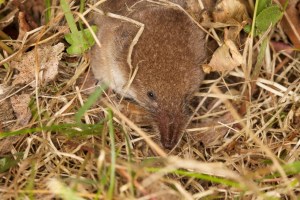 In order to comply with its environmental responsibilities under legally binding agreements, the Department of the Environment last year carried out a survey of small mammal species on the Island to understand changes or threats to populations and to protect them from further loss.
In order to comply with its environmental responsibilities under legally binding agreements, the Department of the Environment last year carried out a survey of small mammal species on the Island to understand changes or threats to populations and to protect them from further loss.
 The Department last carried out a similar survey 16 years ago and wanted to find out what changes have occurred since then. In 2014 the Department commissioned Natural Solutions Ltd. to carry out a survey of small mammals in Jersey and to prepare a detailed assessment of the changes that have occurred in population densities since an initial survey carried out in 1998.
The Department last carried out a similar survey 16 years ago and wanted to find out what changes have occurred since then. In 2014 the Department commissioned Natural Solutions Ltd. to carry out a survey of small mammals in Jersey and to prepare a detailed assessment of the changes that have occurred in population densities since an initial survey carried out in 1998.
The results of the latest survey, compiled by Denise McGowan and Professor John Gurnell, were published recently.
This new report looks at population numbers, densities and biomass over different seasons and habitats, with the aim of finding out more about the changes that have occurred over the 16 year period.
Small mammals matter because they play a vital role in maintaining a balanced ecosystem in Jersey, as keystone prey species for our large predators including birds of prey and snakes. They are indicators of habitat quality and help shape our environment.
Four small mammal species were surveyed at 22 sites in nine different habitats across the Island:
- Wood mouse Apodemus sylvaticus
- Jersey bank vole Myodes glareolus caesarius
- Lesser white-toothed shrew Crocidura suaveolens
- Millet’s shrew Sorex coronatus
 The vole is a unique Jersey sub-species and, in the British Isles, the lesser white-toothed shrew is only found in Jersey, Sark and the Isles of Scilly and Millet’s (or French) shrew only in Jersey. The vole and the two shrew species are protected under the Conservation of Wildlife (Jersey) Law 2000 and Jersey is committed through its legislation and international conventions to monitor and protect them.
The vole is a unique Jersey sub-species and, in the British Isles, the lesser white-toothed shrew is only found in Jersey, Sark and the Isles of Scilly and Millet’s (or French) shrew only in Jersey. The vole and the two shrew species are protected under the Conservation of Wildlife (Jersey) Law 2000 and Jersey is committed through its legislation and international conventions to monitor and protect them.
Results indicate that since 1998, wood mice have continued to be widespread; the Jersey bank vole has followed a similar pattern but appeared to favour heathlands, hedgerows, woodlands and undisturbed grasslands.
The data for shrew species was more difficult to compare across the two surveys due to a low capture rate and a patchy distribution across sites, seasons and years.
Further work is required to determine what could be affecting the shrews’ distribution and population numbers in Jersey.
Download the full report here




